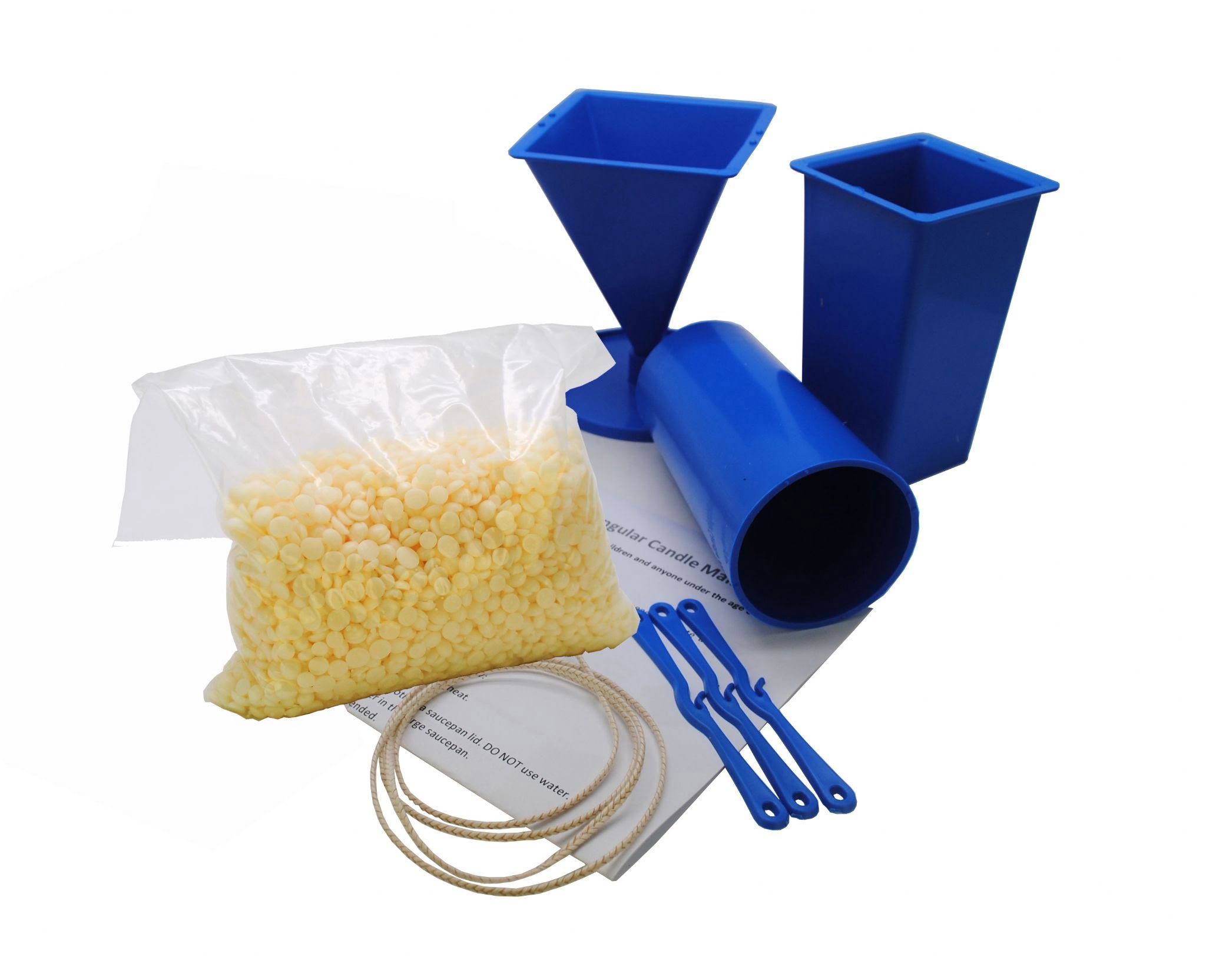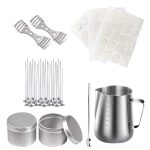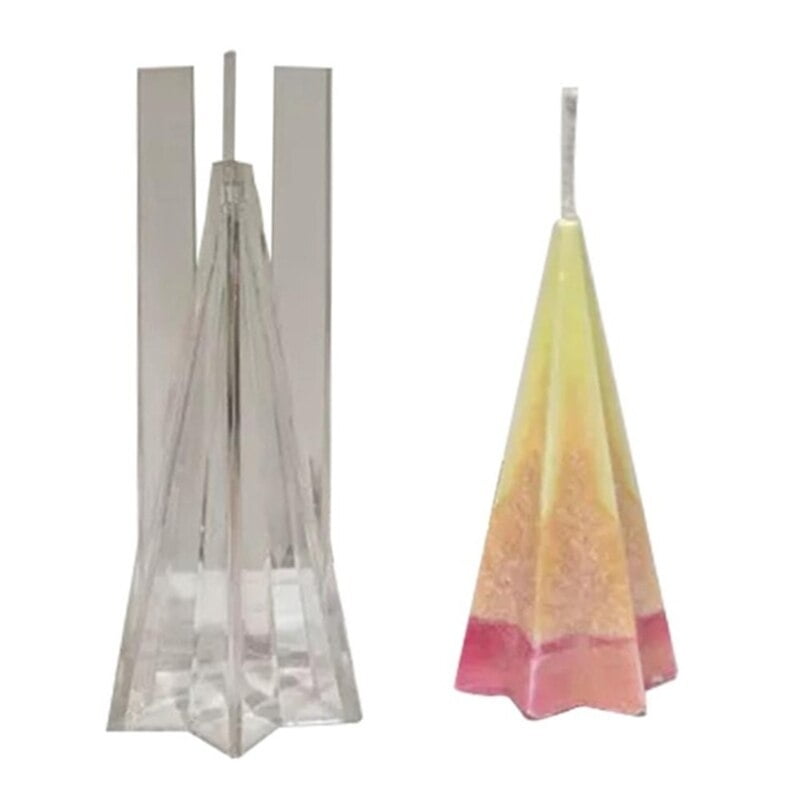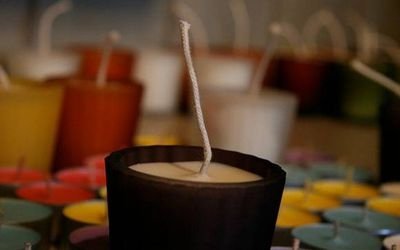Candle making is both a beautiful art form and a lucrative business opportunity. Whether you’re a hobbyist creating candles for personal enjoyment or an entrepreneur looking to break into the industry, understanding the costs involved in candle making is crucial for success. This is where a Candle Making Cost Break Down Spreadsheet comes into play.
A Candle Making Cost Break Down Spreadsheet is a tool that helps you analyze and track the expenses associated with producing candles. It provides a detailed breakdown of all the costs involved, from raw materials like wax, wicks, and fragrances, to additional expenses such as containers, labels, and packaging. By accurately calculating these costs, candle makers can make informed decisions about pricing their products and maximizing profitability.
Using a Candle Making Cost Break Down Spreadsheet offers numerous benefits. Firstly, it allows candle makers to have a clear understanding of how much each candle costs to produce. This information helps in setting competitive prices that cover all expenses while ensuring profitability.
Additionally, the spreadsheet enables effective tracking of labor costs by estimating the time and effort invested in each candle’s creation. It also highlights hidden costs like shipping fees, marketing expenses, and overhead expenditures that may impact overall profitability.
What is a Candle Making Cost Break Down Spreadsheet?
A Candle Making Cost Break Down Spreadsheet is a tool used by candle makers to track and analyze the expenses incurred in the process of making candles. It provides a detailed breakdown of all the costs involved, allowing candle makers to accurately calculate the total expense for each candle they produce. This spreadsheet serves as a valuable resource for candle makers who want to understand and optimize their production costs.
The primary purpose of a Candle Making Cost Break Down Spreadsheet is to give candle makers a clear understanding of their expenses at every stage of the production process. It includes various cost categories such as wax, wicks, fragrances, containers, labels, packaging, labor, shipping, marketing, and overhead expenses. By meticulously tracking and organizing these costs in one place, candle makers can gain insights into how much they are spending on each aspect of their production.
Using a Candle Making Cost Break Down Spreadsheet has numerous benefits for candle makers. Firstly, it helps them identify areas where they can cut costs and improve profitability. For example, by comparing prices from different suppliers for wax or fragrances, they may be able to find more affordable options without compromising on quality. Additionally, tracking labor costs allows them to assess if any tasks can be streamlined or if additional help is needed during peak production times.
| Cost Component | Estimated Expense |
|---|---|
| Wax | $50 |
| Wicks | $20 |
| Fragrances | $30 |
| Total Cost | $100 |
Benefits of Using a Candle Making Cost Break Down Spreadsheet
A Candle Making Cost Break Down Spreadsheet can be an invaluable tool for candle makers, providing a range of benefits that can help you maximize profitability and make informed business decisions.
One of the key benefits of using a cost break down spreadsheet is the ability to accurately track and analyze your expenses. By inputting all the costs associated with making your candles, such as wax, wicks, fragrances, containers, labels, packaging, labor, and hidden costs like shipping and marketing, you can easily see where your money is going.
This level of transparency allows you to identify areas where you may be overspending or where you could potentially cut costs without sacrificing quality.
Another advantage of using a cost break down spreadsheet is that it helps you set appropriate pricing for your candles. By knowing exactly how much each candle costs to make, including both direct and indirect expenses, you can determine a fair and profitable selling price. This ensures that you are not underpricing your products and leaving money on the table or overpricing them and deterring customers.
Furthermore, a cost break down spreadsheet enables you to compare different suppliers and their prices for materials. By having all the information in one place, including quantities required and unit prices offered by various vendors, you can make informed purchasing decisions that will save you money in the long run. It also allows you to easily update the spreadsheet whenever there are changes in pricing or availability from different suppliers.
Key Components of a Candle Making Cost Break Down Spreadsheet
A Candle Making Cost Break Down Spreadsheet is a valuable tool for candle makers to accurately calculate and track the costs involved in their craft. This section will explore the key components of a Candle Making Cost Break Down Spreadsheet and explain why each component is important.
- Materials: One of the key components of a Candle Making Cost Break Down Spreadsheet is a comprehensive list of all the materials used in candle making, such as wax, wicks, fragrances, containers, labels, packaging, and any other materials specific to the type of candles being made. Including the cost per unit for each material will allow candle makers to calculate the total cost of materials for each candle produced.
- Quantities: The next important component is tracking the quantities of materials used for each candle. This includes recording the amount of wax, number of wicks, volume of fragrance used, and any other measurements relevant to the specific candle-making process. By accurately tracking these quantities, candle makers can calculate material costs more precisely and ensure they have enough inventory on hand.
- Labor Costs: Another crucial component is tracking labor costs involved in making candles. This includes recording the time spent on various tasks such as melting wax, pouring candles, labeling and packaging, cleaning equipment, and any other labor-intensive activities. By assigning an hourly rate to labor costs and tracking the time spent on each task, candle makers can calculate their labor expenses accurately.
Including these key components in a Candle Making Cost Break Down Spreadsheet enables candle makers to have a clear understanding of their production costs from start to finish. It allows them to analyze their expenses accurately and make informed decisions about pricing their candles or identifying areas where they can reduce costs.
By having a detailed record of all cost components in one place, candle makers can maximize profitability by identifying opportunities for cost savings without compromising on the quality or integrity of their product.
| Component | Description |
|---|---|
| Materials | A comprehensive list of all materials used in candle making, including the cost per unit for each material. |
| Quantities | Tracking the quantities of materials used for each candle, including the amount of wax, number of wicks, volume of fragrance used, etc. |
| Labor Costs | Tracking labor costs involved in making candles, including recording the time spent on various tasks and assigning an hourly rate to labor expenses. |
Calculating the Cost of Wax, Wicks, and Fragrances
When it comes to candle making, one of the most important aspects is calculating the cost of materials. This includes determining the cost of wax, wicks, and fragrances that go into each candle. By accurately calculating these costs, candle makers can ensure that they are pricing their products appropriately and maximizing profitability.
In a Candle Making Cost Break Down Spreadsheet, there are specific components dedicated to calculating the cost of wax, wicks, and fragrances. Here is a breakdown of how to calculate these costs:
- Wax: The cost of wax is typically measured in weight per pound or kilogram. To determine the cost of wax per candle, you’ll need to know the weight of wax used in each candle and divide it by the total weight of a pound or kilogram container. Then multiply this ratio by the cost per pound or kilogram. This will give you the cost of wax for each individual candle.
- Wicks: Wicks come in various sizes and types, each with their own associated costs. To calculate the cost per candle for wicks, you’ll need to determine how many wicks are used in each candle and multiply it by the cost per wick. It’s important to note that depending on your desired burn time or fragrance load, you may need multiple wicks in one candle.
- Fragrances: Fragrances also vary in price depending on the type and quality. To determine the cost per candle for fragrances, you’ll need to calculate how much fragrance oil is used in each candle and multiply it by the cost per ounce or milliliter.
| Component | Calculation Method |
|---|---|
| Wax | (Weight of Wax / Weight Container) x Cost per Pound/Kilogram |
| Wicks | Number of Wicks x Cost per Wick |
| Fragrances | Fragrance Oil Used x Cost per Ounce/Milliliter |
By accurately calculating the cost of wax, wicks, and fragrances for each candle, candle makers can have a clear understanding of their material expenses. This ensures that pricing decisions are based on actual costs and helps in determining the final retail price of each candle. Additionally, keeping track of these costs over time can help in identifying trends and making adjustments to optimize profitability.
Understanding Additional Costs
When it comes to candle making, understanding and accounting for additional costs beyond the main ingredients is essential for an accurate cost breakdown. In this section, we will delve into the various components that contribute to the overall expense of creating candles, including containers, labels, and packaging. These elements not only add aesthetic value but also play a crucial role in protecting and presenting your finished products.
Containers
Choosing the right container for your candles is not only important for the visual appeal but also affects the overall cost. There are various options available such as glass jars, tin cans, ceramic vessels, or even custom-made containers.
The price of containers can vary depending on factors such as size, material quality, style, and customization options. It’s important to consider both the upfront cost of purchasing containers in bulk and any additional expenses like shipping fees or import taxes if sourcing containers from overseas suppliers.
Additionally, different types of containers may require specific accessories such as lids or covers that can add to the overall cost. It is also worth noting that some customers may prefer reusable or eco-friendly containers which might come at a higher price point but can attract a niche market segment.
Labels
Creating visually appealing labels for your candles is an integral part of branding and marketing efforts. The cost of labels can vary based on factors such as design complexity, material quality (e.g., paper or waterproof materials), printing techniques used (e.g., digital or offset printing), and quantity ordered. For smaller businesses or those just starting out, using pre-designed label templates or working with local print shops may be more budget-friendly options.
It’s also important to ensure compliance with labeling regulations specific to candle products in your target market. This may include information like product name, weight/quantity, safety instructions and warnings (e.g., keep away from pets/children), and ingredients or allergens present in the fragrance.
Packaging
Packaging is not only about protecting your candles during transit but also about creating a memorable unboxing experience for your customers. The cost of packaging materials will depend on factors such as size, material quality, and customization options. Common packaging options include boxes, gift wraps, tissue paper, or even reusable cloth bags. It’s important to strike a balance between aesthetic appeal and cost-effectiveness while ensuring the packaging aligns with your brand’s image and values.
Consider using eco-friendly or sustainable packaging materials if they align with your brand ethos as this can be an attractive selling point for environmentally conscious consumers. Additionally, keep in mind any special requirements for international shipping, such as customs declarations or restrictions on specific materials that could impact your packaging choices.
Tracking Labor Costs
Candle making is not just about the materials used, but also the time and effort put into creating each individual candle. Tracking labor costs is essential for candle makers to accurately determine the true cost of their products. This section will discuss the importance of tracking labor costs, as well as provide tips on how to effectively do so.
Why Track Labor Costs?
Labor costs play a significant role in determining the overall profitability of a candle making business. By tracking labor costs, candle makers can assess whether they are spending an excessive amount of time on each candle and if adjustments need to be made to increase efficiency. Additionally, knowing the amount of time and effort involved in candle making allows for more accurate pricing, ensuring that the final product’s price reflects both material expenses and labor.
How to Track Labor Costs
To track labor costs effectively, it is important to establish a system that accurately records the time spent on each step of the candle-making process. One method is to use a stopwatch or timer to record the time taken for various tasks such as melting wax, adding fragrance oils, pouring into molds, and attaching labels. Another option is to have a logbook or spreadsheet where employees can record their start and end times for each task.
In addition to tracking time, it can also be helpful to keep note of any challenges or issues encountered during the process. This information allows for better analysis when evaluating ways to optimize productivity. Moreover, making sure all workers are aware of labor tracking procedures will ensure consistency throughout production.
By consistently tracking labor costs, candle makers can gain valuable insights into how much time and effort goes into producing each candle. This data can then be used to make informed business decisions such as streamlining processes or hiring additional staff during peak demand periods. Ultimately, tracking labor costs empowers candle makers with the knowledge needed to run a profitable and efficient candle making business.
Hidden Costs to Consider
When calculating the cost of candle making, it is essential to consider not only the direct materials and labor involved but also the hidden costs that can significantly impact profitability. In this section, we will explore the hidden costs of shipping, marketing, and overhead expenses that should be considered when creating a candle making cost break down spreadsheet.
Shipping Costs
One of the most common hidden costs in candle making is shipping. Whether you sell your candles locally or online, you will need to factor in the cost of shipping supplies, such as boxes and packing materials, as well as the actual shipping fees. Shipping rates can vary greatly depending on factors such as weight, size, destination, and carrier choice.
To accurately calculate shipping costs for each candle you produce, it is helpful to determine an average weight and size for your candles. This information will enable you to estimate packaging requirements more precisely. Additionally, researching different shipping carriers and their pricing structures can help you find the most cost-effective solution for your business.
Marketing Expenses
Marketing plays a vital role in promoting your candles and attracting customers. However, it is important to consider the expenses associated with marketing efforts when calculating the overall cost of candle making. Common marketing expenses include photography for product images, graphic design for promotional materials or labels, social media advertising campaigns, website maintenance fees or hosting costs.
To include these expenses in your cost break down spreadsheet accurately, consider establishing a monthly budget dedicated solely to marketing activities. By tracking all marketing-related expenditures consistently in one place within your spreadsheet system, you’ll have a better understanding of how these costs affect your overall production expenses.
Overhead Expenses
In addition to direct costs like wax and fragrances or labor expenses, there are several overhead expenses associated with running a candle making business. Overhead refers to the ongoing costs that are not directly tied to the production process but are essential for day-to-day operations. These may include rent or mortgage payments for a workspace, utilities, insurance, licenses, as well as software subscriptions or equipment maintenance.
To accurately calculate overhead expenses, it is helpful to prorate these costs per candle based on their proportionate use. This means dividing each expense by the number of candles you produce in a given period and adding the resulting value to the overall cost of each candle.
By including shipping costs, marketing expenses, and overhead expenses in your candle making cost break down spreadsheet, you will have a comprehensive view of all potential costs associated with your business. This information will empower you to make informed decisions regarding pricing strategies and identify opportunities for maximizing profitability.
Tips for Creating and Utilizing Your Own Candle Making Cost Break Down Spreadsheet
Creating and utilizing your own candle making cost break down spreadsheet can greatly benefit candle makers by providing a clear understanding of their expenses and maximizing profitability. Here are some tips to help you create and effectively use your own spreadsheet:
- Identify all the cost components: Start by listing all the costs involved in candle making, such as wax, wicks, fragrances, containers, labels, packaging, labor, shipping, marketing, and overhead expenses. Break down each component into specific subcategories if necessary.
- Research and gather accurate pricing information: To ensure accuracy in your cost break down spreadsheet, research current market prices for each cost component. Take note of any variations in prices based on quantity or quality.
- Create a detailed worksheet: Organize your spreadsheet by creating separate columns or tabs for each cost component. Within each column or tab, include subcategories that will help you calculate the overall cost more accurately.
- Calculate costs per unit: For each cost component, calculate the total cost per unit of candles produced. This will provide you with a clearer picture of how much each candle costs to make.
- Include formulas for automatic calculations: Utilize spreadsheet functions like SUM to automatically calculate totals and averages. This will save you time and minimize errors when updating the spreadsheet with new data.
- Regularly update your spreadsheet: As prices fluctuate over time and your business grows, it is important to regularly update your cost break down spreadsheet to reflect these changes accurately.
- Analyze data trends: Use your spreadsheet to analyze patterns and trends in your expenses over time. Look for areas where costs can be reduced or optimized to increase profitability.
- Make informed business decisions: Armed with accurate cost data from your spreadsheet, you can make informed decisions about pricing strategies, product development, marketing campaigns, and overall business operations.
By following these tips for creating and utilizing a candle making cost break down spreadsheet, candle makers can gain valuable insights into their expenses and maximize profitability. This tool empowers them to make informed decisions that will ultimately contribute to the success and growth of their candle making business.
Maximizing Profitability
One of the key benefits of using a candle making cost break down spreadsheet is the ability to analyze data and make informed business decisions. By tracking all the costs involved in candle making, candle makers can gain valuable insights into their expenses and identify opportunities for maximizing profitability. Here are some tips on how to analyze the data in your cost break down spreadsheet and make informed business decisions.
1. Identify which candles are the most profitable: With a cost break down spreadsheet, you can easily calculate the cost per candle by dividing the total cost by the number of candles produced. This allows you to compare the profitability of different candle types or scents. By identifying which candles bring in the highest profit margins, you can focus your resources on producing more of those candles and optimizing your product mix.
2. Analyze trends in costs: By regularly updating your cost break down spreadsheet, you can track any fluctuations in material costs, labor costs, or other expenses. This allows you to identify any trends or patterns that may impact your profitability. For example, if you notice that certain materials have increased in price over time, you might consider sourcing alternative suppliers or adjusting your pricing strategy to maintain profitability.
3. Monitor productivity and efficiency: Another important aspect of analyzing data is assessing the productivity and efficiency of your candle making process. By tracking labor costs and time spent on each batch of candles, you can identify any bottlenecks or inefficiencies that may be driving up your production costs. This information can help you optimize your workflow or invest in automation tools to streamline operations and increase profitability.
Conclusion
In conclusion, a Candle Making Cost Break Down Spreadsheet can be an essential tool for candle makers looking to understand and manage their costs effectively. This spreadsheet empowers candle makers by providing a comprehensive breakdown of the expenses involved in the candle making process. By accurately calculating the cost of wax, wicks, fragrances, containers, labels, packaging, labor, shipping, marketing, and overhead expenses, candle makers can gain a clear understanding of the total cost per candle produced.
One of the key benefits of using a Candle Making Cost Break Down Spreadsheet is that it allows candle makers to make informed business decisions. By analyzing the data provided in the spreadsheet, candle makers can identify areas where costs can be reduced without compromising on quality. They can also determine which candles are more profitable and focus on producing those in larger quantities. Ultimately, this analysis allows candle makers to maximize their profitability and ensure long-term success.
Furthermore, creating and utilizing your own Candle Making Cost Break Down Spreadsheet gives you control over your business finances. With this tool at hand, you will have transparency into every aspect of your costs and can easily track any fluctuations or changes over time. This level of organization not only helps you stay on top of your financials but also enables better planning for future growth and expansion.
In summary, a Candle Making Cost Break Down Spreadsheet empowers candle makers by providing them with accurate insights into their expenses and allowing them to make informed decisions about their business operations. By understanding all the costs associated with their craft, from materials to labor to hidden expenses like shipping and marketing, candle makers can optimize their profitability and pave the way for long-term success in the industry.
Frequently Asked Questions
How do you calculate cost per candle?
To calculate the cost per candle, you need to consider all the expenses related to making the candles. This includes the direct costs of materials such as wax, wicks, fragrance oils, and any decorative elements like colorants or containers.
Additionally, you should factor in indirect costs like utilities (energy used for melting wax), packaging materials, labor costs (including your own time if applicable), and any fees associated with selling the candles (such as online marketplace fees or shipping costs). Once you have determined the total cost of producing a batch of candles, you can divide it by the number of candles produced to get the cost per candle.
How much does it cost on average to make a candle?
The average cost of making a candle can vary depending on various factors such as the type and quality of materials used, production scale, and location. Generally, it is essential to break down all expenses involved in candle-making to determine an accurate average cost. This includes direct material costs (wax, wicks, fragrance oils) as well as indirect costs (packaging materials, utilities).
Additional expenses like labor costs and overheads should also be considered. By tallying up these expenses for a particular period or batch of candle production and dividing it by the number of candles made during that time frame, you can arrive at an average cost per candle.
What is a good profit margin for candles?
A good profit margin for candles can vary depending on several factors including market demand, competition, quality of your product compared to competitors’, and operational efficiency. However, generally speaking, a profit margin between 50% to 70% is considered healthy in the candle-making industry. This means that after deducting all expenses related to producing and selling candles from the final selling price per unit (revenue), you should aim to have a remaining profit that accounts for at least 50% but ideally closer to 70%.
A higher profit margin ensures that there is enough room for covering both fixed and variable costs while generating sufficient profit for the business. It also allows for potential expansion, marketing efforts, and reinvestment in the company’s growth.

Welcome to my candle making blog! In this blog, I will be sharing my tips and tricks for making candles. I will also be sharing some of my favorite recipes.





